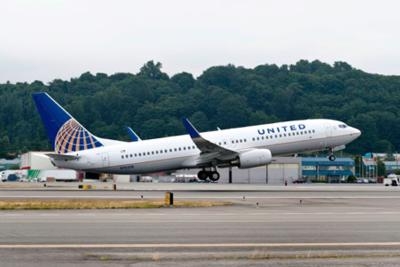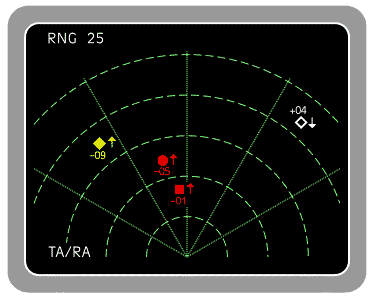Wed, Sep 25, 2024
Pilots Forced to React After Receiving Mid-Air Collision Alert
On September 19, two passengers on a flight from Newark to San Francisco were injured after United pilots executed an emergency maneuver. The aircraft had reportedly received a notification from their Traffic Alert and Collision Avoidance System (TCAS) and was attempting to escape an accident.

Flight UA2428 made a delayed departure from Newark Liberty International Airport (EWR) at 12:03 am local time, climbing up to 32,000 ft for cruise. Then, at 38,000 ft and in Wyoming airspace, pilots received and responded to a TCAS alert. The flight was able to continue as planned and land at San Francisco International Airport (SFO).
One passenger suffered serious injury from the emergency maneuver, with another receiving minor injuries. The FAA has not disclosed the nature of the injuries; however, the agency has classified the event as an accident.
No details have been provided about the aircraft the TCAS was potentially alerting to.

TCAS is known internationally as the Airborne Collision Avoidance System (ACAS). The technology is commercially mandated in the US. Federal Aviation Regulations require that TCAS I, which provides Traffic Alerts (TAs), be installed on commercial turbine aircraft with 10-30 passengers. TCAS II gives TAs and resolution advisories, including recommended escape maneuvers, and is required for aircraft with more than 30 seats.
Pilots of United Flight 2428 were likely executing the recommended escape maneuver provided by the TCAS II to avoid a collision.
With the recent increase in FAA scrutiny, another accident is likely the last thing United needs. The FAA stepped up its oversight of the carrier in March following a series of flight issues, including a piece of aluminum skin falling off, an aircraft shedding a tire after takeoff, and an engine fire on another plane. The airline has since been given back several privileges, but the FAA has yet to drop the case entirely.
More News
Also: Netherlands Donates 18 F16s, 2 737s Collide On Ramp, E-7 Wedgetail Cut, AgEagle's 100th In S Korea The Pilot and Aircraft Privacy Act was introduced in the House by Represent>[...]
Pilot Also Reported That Due To A Fuel Leak, The Auxiliary Fuel Tanks Were Not Used On June 4, 2025, at 13:41 eastern daylight time, a Piper PA-23, N2109P, was substantially damage>[...]
Have A Story That NEEDS To Be Featured On Aero-News? Here’s How To Submit A Story To Our Team Some of the greatest new stories ANN has ever covered have been submitted by our>[...]
From 2023 (YouTube Edition): Reflections on War’s Collective Lessons and Cyclical Nature The exigencies of war ought be colorblind. Inane social-constructs the likes of racis>[...]
What Goes Around, May Yet Come Back Around, Klyde FMI: www.klydemorris.com>[...]
 Airborne 06.30.25: US v ADS-B Misuse, Natl STOL Fire, Volocopter Resumes
Airborne 06.30.25: US v ADS-B Misuse, Natl STOL Fire, Volocopter Resumes NTSB Prelim: Piper PA-23
NTSB Prelim: Piper PA-23 ANN FAQ: Submit a News Story!
ANN FAQ: Submit a News Story! Classic Aero-TV: One Mans Vietnam
Classic Aero-TV: One Mans Vietnam Klyde Morris (06.30.25)
Klyde Morris (06.30.25)




